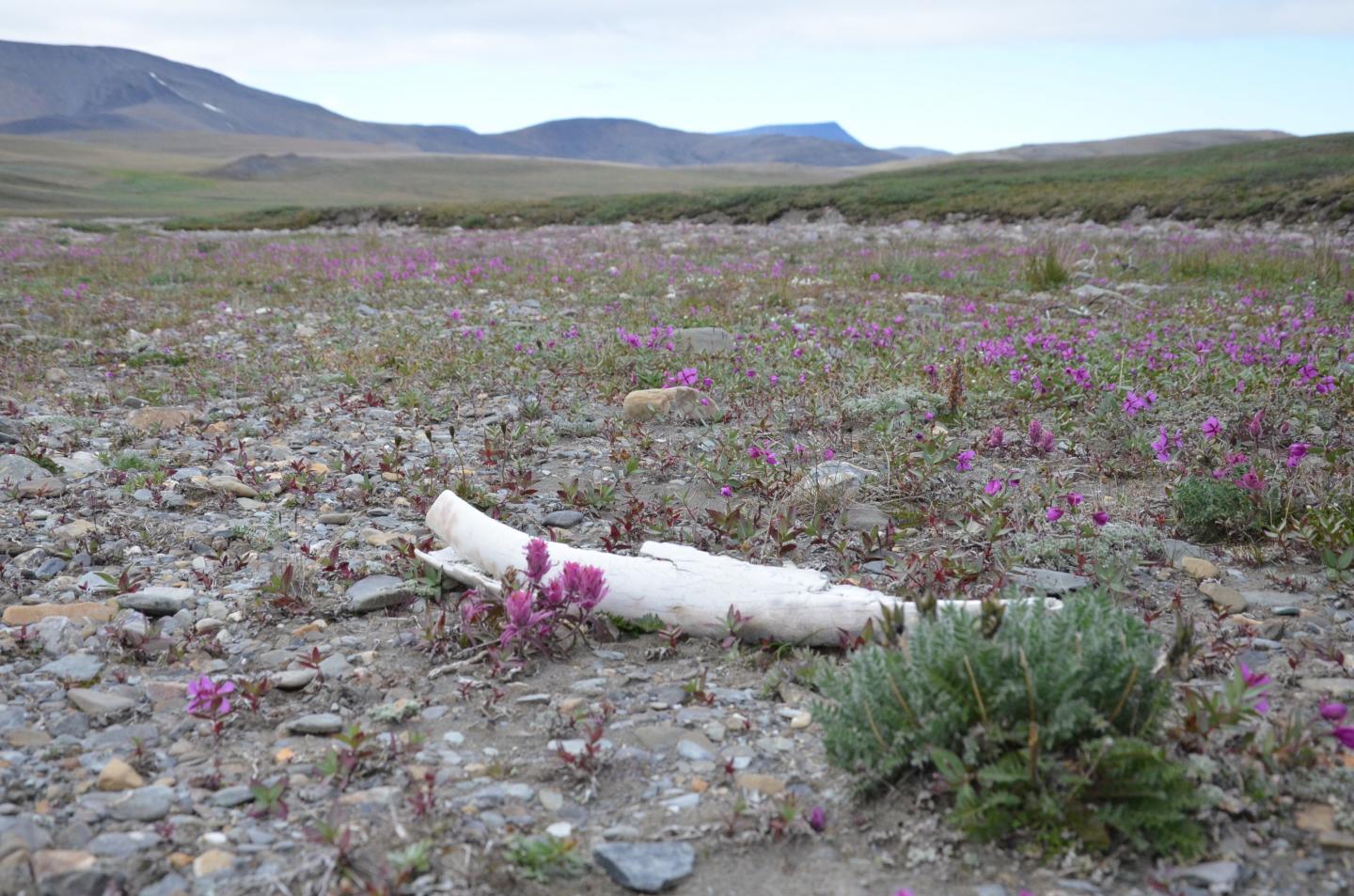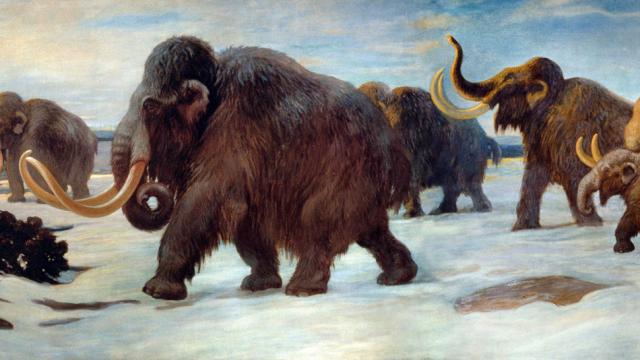While conducting an analysis of woolly mammoth DNA, European researchers noticed something a little strange. A disproportionate number of male mammoths were found preserved in traps, such as holes and bogs. The explanation, say the researchers, can be be tied to the behaviour of their distant relatives – the modern elephant.
Portion of a mural depicting a herd of mammoths walking near the Somme River (1916) (Image: Charles R. Knight/American Museum of Natural History/Public Domain)
Imagine the scene: It’s about 12,000 years ago during the last Ice Age and a lone woolly mammoth is venturing across a frozen lake. Its finely-tuned ears hears a crack. And then another. The mammoth picks up the pace in hopes of reaching the shore – but it’s too late. The ice collapses under the weight of the massive beast, and it plunges through into the frigid water below. It frantically tries to get out but it’s no use; the mammoth drowns after just a few minutes of struggle.
Chances are, this woolly mammoth was male, according to new research published yesterday in Current Biology.
In the course of analysing mammoth DNA, Swedish Museum of Natural History researchers noticed an odd gender skew. Of the 98 woolly mammoth genomes studied, nearly 70 per cent belonged to males. Since the ratio of males to females was likely balanced a birth, the scientists had to consider other explanations, namely those involving the way these mammoths were preserved after death.

“Without the benefit of living in a herd led by an experienced female, male mammoths may have had a higher risk of dying in natural traps such as bogs, crevices, and lakes,” said Dalén.
This study shows that woolly mammoths were startlingly similar to modern elephants in terms of their behaviour, and that fossil remains can tell us a lot about the social and behavioural aspects of extinct species.
